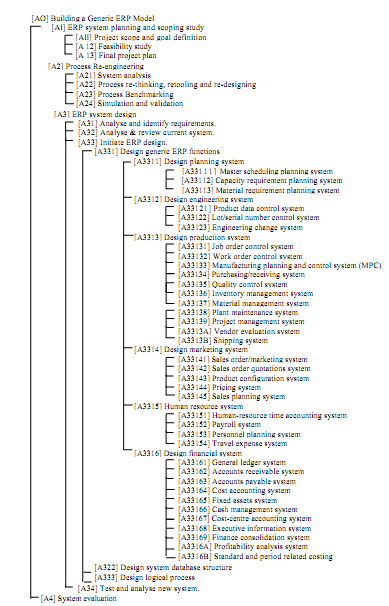Generic Model of ERP System:
Design of an integrated enterprise model is a complicated task as it involves mapping of all the functions, information flow, decision process, material flow, and several other aspects, that govern the dynamic process of the enterprise. Several approaches exist to do this. A generic model may comprise two building blocks: hierarchical IDEF model and object oriental model. Some of other models adopt structural modelling or system approach with support from object-oriented approach to analyse and design the software (Ng. et al. 1999). A general understanding of ERP is as follows:
|
Enterprise Resource Planning (ERP) is a game plan for planning and monitoring all of the resources of a manufacturing company, involving the functions of manufacturing, finance marketing & engineering. ERP is recognized as being an effectual management system that contains an outstanding planning and scheduling capability offering significant achievement in productivity, dramatic enhance in customer service, much higher inventory turns, and larger reduction in material costs. These technology innovations involved the move to relational database management systems (RDBMS), the utilization of a graphical user interface (GUI), open systems and a client/server architecture.
|
The generic design of ERP involves development of a tree structure, depicting different functional nodes of enterprise. A simplified generic model of ERP system is depicted in Figure. All of the generic representations of this figure might further be exploded to develop the exploded generic representation.

Figure: Model of Generic ERP System Showing Few Node Trees